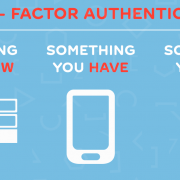The Benefits of Regular Network Assessments
Increased Visibility
Ongoing assessments create a series of regularly scheduled network “snapshots,” which can give MSPs more insight and help to identify patterns and behaviors that alert you to a potential breach. IT assessment tools can uncover vulnerabilities, identify patterns, and pinpoint red flags that could indicate existing issues or risks. In this way, you can establish baselines for overall network health, as well as document all assets and configurations associated with the system, and then generate reports that reveal what improvements or degradations have taken place.
Similarly, conducting regular assessments enables off-site MSPs to observe changes which they may not be aware of. Clients are constantly adding and removing hardware, software, and users. These changes can have a significant impact on your overall cost of service. If your service contracts are based on either endpoints or active users, then you’ll certainly want to keep tabs on these things, and monitoring systems are not designed to do that. In addition, regular network scans and reports can be automated, making it quick and cost-effective to remain informed about users, assets, and network changes that could create new vulnerabilities.
Enhanced Security
You can also think of network assessments like a protective suit of armor. IT assessments point out chinks in the armor, or holes in the chain mail where a sword can penetrate, leaving the suit’s owner vulnerable to injury during an attack. Yet if that armor is in continued use, it will naturally require inspection on a recurring schedule.
In the long-run, a small investment in regular assessments will pay-off by way of mediated risks and protection of your end-users’ assets, avoiding network compromise and downtime.
Lead Generation and Business Growth
Many MSPs have found that ongoing assessments can be a successful strategy for uncovering new opportunities and growing their businesses. Recurring IT assessments allow you to share with your client professionally-produced and easy-to-consume summary reports, management reports, and QBR reports – all of which form those critical pieces of tangibility, giving your clients evidence of the value of all your hard work. However, some might not know where to start with this, how to best structure an offering, or what types of service to provide to what clients. I’d suggest that you offer a tiered menu of services—e.g., a basic, enhanced, and premium program—creating a structure that can be applied across a range of clientele.
For example, a basic program that’s appropriate for most SMB clients would include baseline assessments, network and security risk reports, and external vulnerability summaries. An enhanced program would add internal vulnerability scans and additional components such as Network Security SQL Server reports, and Layer 2/3 diagrams and details. A more comprehensive premium program, appropriate for end-clients in more complex markets such as healthcare, would include HIPAA compliance management, demonstrating ongoing compliance and remediation activity that can serve as documentation in the instance of a compliance breach, or an audit.
Savvy managed services providers who leverage regular network assessments on a long-term basis stand to differentiate their service offerings, gain consistent revenue, and increase loyalty among their clientele. And by engaging in assessments on a regular basis, your end-users can gain a more secure, reliable infrastructure, while potentially avoiding compliance violations, via a more proactive, sustained strategy.
RapidFire Tools is a sponsor of Continuum’s upcoming user conference, Navigate 2017. To learn more about how to structure an ongoing assessment offering, you can download our new white paper or come stop by our booth at Navigate!











